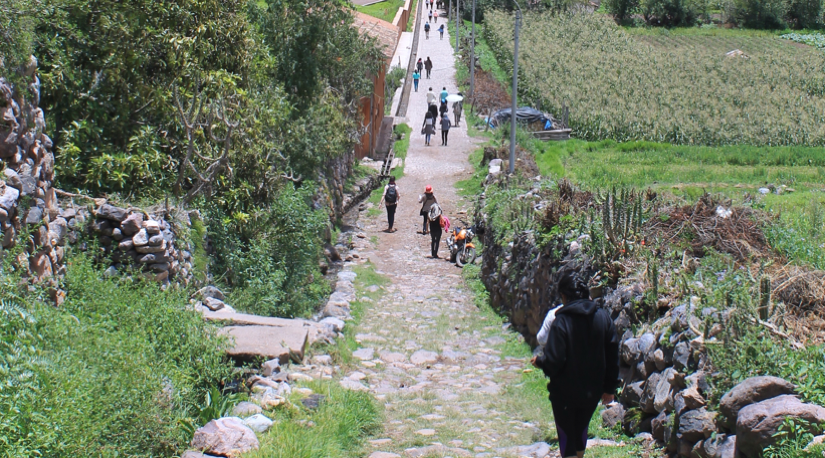In recent years, studies have made it clear that women are impacted disproportionately more than men by poverty and climate change around the world. The social and cultural norms of many developing countries disadvantage women and lower their socioeconomic status.
Tasked with jobs like caring for the young and elderly, fetching water, and finding materials for cooking and heating, women are the most vulnerable to the negative effects of both climate change and poverty. These unpaid responsibilities leave less time for formal, wage-earning jobs. In addition, if water becomes scarce or heating materials, like wood, are further away, women are the ones sacrificing more time to complete basic tasks. This leaves even less time for them to earn money or invest in an education.
While this negative cycle exists today, that doesn’t mean we can’t change it. Because women are the biggest victims of poverty and climate change, they are also uniquely positioned with the immense potential to solve these issues. This puts young girls at the heart of the solutions to poverty and climate change. Dozens of organizations are working to empower young women not just because it is the equitable thing to do, but also with the hope that they will, in turn, make a change.
Women as the Key to Change
Women are increasingly recognized for their key role in the economic and community growth. Living on the front lines of poverty and climate change is the very reason young women are positioned to make the largest positive impacts.
“Better lives for girls means better lives for everyone in their communities . . . when you improve a girl’s life through education, health, safety, and opportunity, these changes have a positive ripple effect” – Girl Effect Accelerator
Educated girls reinvest nearly 2.5x as much of their future earnings in their family and future than their male counterparts. Increasing gender equality has the capacity to improve life for everyone! This realization has led to the rise of the Girl Effect Accelerator investment fund and other investment initiatives that are specifically designed to fund ventures and programs to benefit girls in poverty.
The rise in investments and educational opportunities for girls is amazing, but it still doesn’t address a separate issue – historically, women are not active participants in designing and implementing the initiatives aiding their communities. So, how do we give girls the chance to make a change and a voice to say how to do it?
Lack of Women in Leadership Roles
Unfortunately, the increasing vocal support for women and girls has not resulted in their inclusion and leadership of initiatives. Women’s participation is neglected in the majority of projects aimed to combat poverty and improve sustainability. Including them in the planning and implementation is crucial to the success and impact of these projects, which normally involve food, water, materials, or devices that the women of communities are interacting with.
Organizations like Girl Effect are dedicated to getting girls and women involved, but there are two components to fix this. First, programs need to make an effort to include local girls and women in their operations. Second, and much more difficult, local girls in the region of these initiatives need to have the education, skills, and desire to become leaders. At Visionaria, one of our main focuses it to give girls the skills and confidence they need to become leaders in both their communities and in these initiatives .
The Starfish school in Guatemala is another program that empowers and maximizes the potential of girls . Starfish understands well that girls who exemplify the “girl effect” do not know that this global movement to help girls even exists. As a result, there are brave young women fighting for change in isolated pockets who aren’t utilizing the resources and communities built for them simply because they don’t know they exist. The Chispa Action Network exists to connect these powerful leaders to sustain and embolden their ability to lead transformational change.
Viewing women and girls as the key to the solution is a great first step, but it needs to be reinforced and communicated to the marginalized girls themselves, and in ways that actually involve them.
The Visionaria Girls Empowerment Programs
Since 2012, we have been focused on empowering girls in Latin America to become social innovators in their own lives and communities. Visionaria programs help young women develop the skills and self-confidence necessary to be agents of positive change.
Ultimately we aim to foster a ‘Visionaria’ mindset in young women through experiential learning opportunities in the areas of empowerment (psychological/agency-based), leadership, and sustainable development. We think it’s time to move from rhetoric to action in this respect, and our reflect this.
We want to answer the tough questions that will empower women, move gender equality forward, and create solutions that combat poverty and climate change:
- What are the most effective ways to incorporate women in the decision making processes for sustainability actions?
- What are the ways to increase the participation and confidence of women in these efforts?
- What are the major challenges and hurdles when trying to empower girls to be agents of change?
What do you think are the most promising ways for girls and young women to find their path? How do you see their paths overlapping with the solutions to poverty and climate change? Please comment below and share your thoughts!

